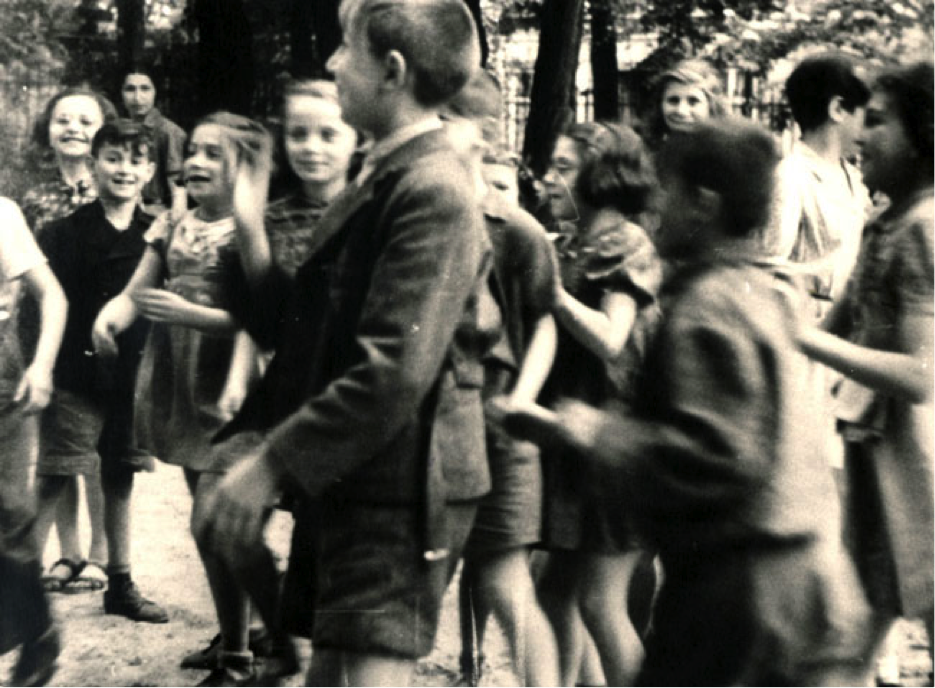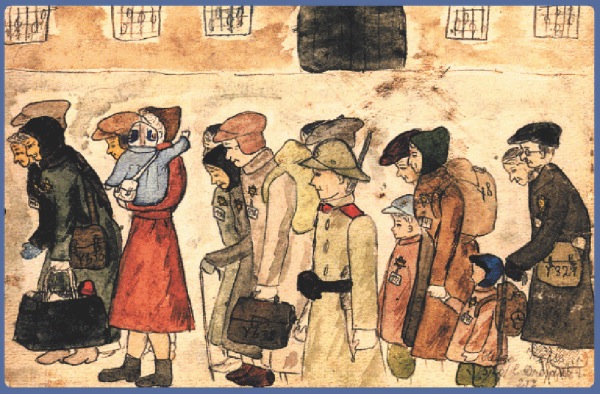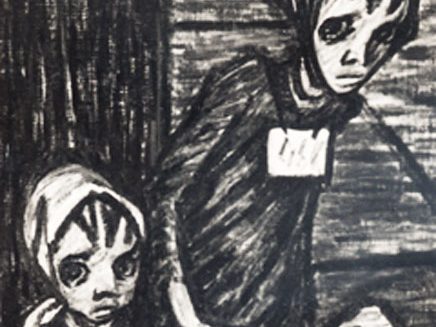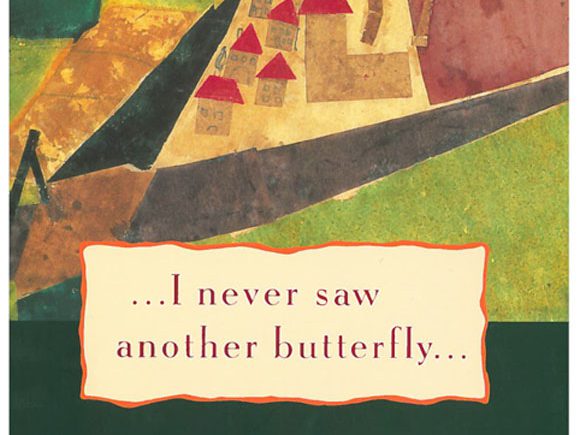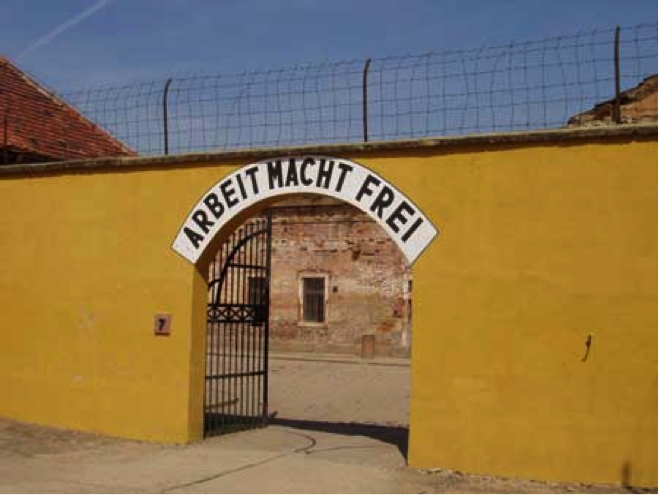Educator Tools

 Ask yourself:
Ask yourself:
- What Holocaust images or texts have had the biggest impact on you and why?
- Can you write a reflection (or “artist statement”) from your perspective, explaining the meaning that the original material holds for you?
- Do you have a personal relationship to the Holocaust (given your own history or identity)?
This chapter offers strategies for responding to the difficult knowledge of the Holocaust, specifically, and to genocide, more broadly. It focuses on engaging your own reflections about the material you are reading and researching, by providing accessible artistic forms to help frame your responses. Highlighting Terezin (Theresienstadt), the chapter uses a foundation of poetry and images to pose questions about this history. Each of the activities has been designed to include a reflective practice component to encourage thoughtful and personal responses to the Holocaust and to consider the impact of discrimination and injustice in your own communities.
During the Holocaust, people wrote poetry for different reasons: to produce art as a form of resistance, to express their feelings, to assert their humanity; to commemorate the victims, to serve as a form of remembrance, or to constitute a unique form of testimony. Holocaust poetry after Auschwitz—written by survivors or children and grandchildren of survivors, for example—presents powerful images, which can impact our minds and hearts. Perhaps by reading poetry about the Holocaust, readers can become more reflective about what they have studied, how they treat people, and how they react to civil and human rights violations in their own communities and beyond.
This really happened
This chapter focuses on Terezin, a ghetto-camp and transit camp in Czechoslovakia (also known by its German name, Theresienstadt). The SS deported and then incarcerated there certain categories of German, Austrian, and Czech Jews, based on their age, disability as a result of past military service, or domestic celebrity in the arts and other cultural life. It existed for three and a half years, between November 24, 1941 and May 9, 1945. Of approximately 140,000 Jews transferred to Theresienstadt, nearly 90,000 were deported to ghettos and death camps in the east. Roughly 33,000 died in Theresienstadt itself. However, despite horrible living conditions and the constant threat of deportation, Theresienstadt also had a highly developed cultural life due to the many artists incarcerated in the camp. They created drawings and paintings, some of them secretly documenting the ghetto’s harsh reality. Writers, professors, musicians, and actors gave lectures, concerts, and theatre performances. Of the 15,000 children who were transported to Terezin, only 240 survived (Volavkova, xix). Like Hana Brady, of Hana’s Suitcase (who was murdered in Auschwitz in 1944), most of the children fourteen years of age or younger who were deported to the extermination camps were killed.
.What is also important to know, however, is that although they were forbidden to attend school, the children did so in secret, thanks to extraordinary teachers like Freidl Dicker Brandeis and Valtr Eisinger. The children painted, wrote poetry, and created a weekly magazine called Vedem (In the Lead). The children even performed a very popular opera entitled Brundibar which was ultimately performed for the June 23, 1944 Red Cross visit. (see Brundibar from 60 Minutes on YouTube.) With the help of their teachers, the children used drawing and writing to help them cope with life under terrible conditions.
It is to these children’s poems and drawings that this unit directs you. The Works Cited list contains numerous resources to help you begin a historical examination of Terezin. The goal is to provide a strong foundation on which to build a thoughtful unit on poetry and the Holocaust. Responding through the arts can offer another means of defining your own relationship to the Holocaust, and an opportunity to raise questions for the next generation to remember this past.
Pictured here are a group of children in the Theresienstadt ghetto. The photo was taken during a Red Cross visit on June 23, 1944. Theresienstadt was a “special” ghetto that the Germans established in Terezin, Czechoslovakia in November 1941. The ghetto was actually a way-station for Jews en route to the death camps. Theresienstadt had the outward appearance of a town. The ghetto population included many artists, composers, musicians, authors, and scientists. Between 1942-1944, approximately 13,000 children were sent to Theresienstadt. The majority was deported to death camps and only a few hundred survived.
Source: Yad Vashem Photo Archives 7 FO2
Helga Weissova entered Terezin when she was only 12 years old. She brought a box of paints and a notebook with her and drew more than a hundred paintings as instructed by her father: “Paint whatever you see.” She was one of the few survivors.
Poems from I Never Saw Another Butterfly
The Garden
A little garden,
Fragrant and full of roses.
The path is narrow
And a little boy walks along it.
A little boy, a sweet boy,
Like that growing blossom.
When the blossom comes to bloom,
The little boy will be no more.
Franta Bass, p. 70. Franta Bass was born on September, 4, 1930. He was deported to Terezin on December 2, 1941, and died in Auschwitz on October 28, 1944.
Credit: “The Butterfly,” “Terezin,” “On A Sunny Evening,” “The Garden,” “Fear,” “Homesick,” and “At Terezin” from I Never Saw Another Butterfly: Children’s Drawings And Poems From Terezin Concentration Camp,1942-44 by Hana Volavkova, copyright © 1978, 1993 by Artia, Prague. Compilation © 1993 by Schocken Books. Used with permission of Schocken Books, an imprint of the Knopf Doubleday Publishing Group, a division of Random House LLC.
At Terezin
When a new child comes
Everything seems strange to him.
What, on the ground I have to lie?
Eat black potatoes? No! Not I!
I’ve got to stay? It’s dirty here!
The floor—why, look, it’s dirt, I fear!
And I’m supposed to sleep on it?
I’ll get all dirty!
Here the sound of shouting, cries,
And oh, so many flies.
Everyone knows flies carry disease.
Oooh, something bit me! Wasn’t that a bedbug?
Here in Terezin, life is hell
And when I’ll go home again, I can’t yet tell.
Teddy, p.3, L410, 1943.
On A Sunny Evening
On a purple, sun-shot evening
Under wide-flowering chestnut trees
Upon the threshold full of dust
Yesterday, today, the days are all like these.
Trees flower forth in beauty,
Lovely, too, their very wood all gnarled and old
That I am half afraid to peer
Into their crowns of green and gold.
The sun has made a veil of gold
So lovely that my body aches.
Above, the heavens shriek with blue
Convinced I’ve smiled by some mistake.
The world’s abloom and seems to smile,
I want to fly but where, how high?
If in barbed wire, things can bloom
Why couldn’t l? I will not die!
Anonymous, 1944, p. 77. Written by the children in Barracks L 318 and L 417; ages 10-16 years.
Terezin
That bit of filth in dirty walls,
And all around barbed wire,
And 30,000 souls who sleep
Who once will wake
And once will see
Their own blood spilled.
I was once a little child,
Three years ago.
That child who longed for other worlds.
But now I am no more a child
For I have learned to hate.
I am a grown-up person now,
I have known fear.
Bloody words and a dead day then,
That’s something different than bogeymen!
But anyway, I still believe I only sleep today,
That I’ll wake up, a child again, and start to laugh and play.
I’ll go back to childhood sweet like a briar rose,
Like a bell which wakes us from a dream,
Like a mother with an ailing child
Loves him with aching woman’s love.
How tragic, then, is youth which lives
With enemies, with gallows ropes,
How tragic, then, for children on your lap
To say: this for the good, that for the bad,
Somewhere, far away out there, childhood sweetly sleeps,
Along that path among the trees,
There o’er that house
That was once my pride and joy.
There my mother gave me birth into this world
So I could weep. . .
In the flame of candles by my bed, I sleep
And once perhaps I’ll understand
That I was such a little thing
As little as this song.
These 30,000 souls who sleep
Among the trees will wake,
Open an eye
And because they see
A lot
They’ll fall asleep again. . .
IX 1944. Hanus Hachenburg was born in Prague on July 12, 1929, and was deported to Terezin on October 24, 1942. He died on December 18, 1943, in Auschwitz.
The Butterfly
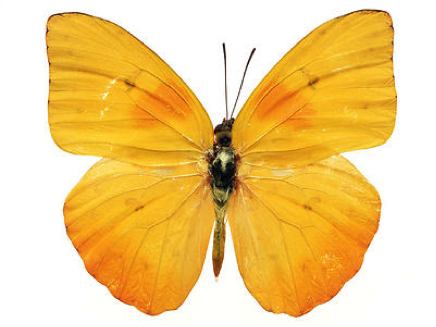
The last, the very last,
So richly, brightly, dazzlingly yellow.
Perhaps if the sun’s tears would sing
against a white stone…
Such, such a yellow
Is carried lightly ‘way up high.
It went away I’m sure because it wished to
kiss the world goodbye.
For seven weeks I’ve lived in here,
Penned up inside this ghetto
But I have found my people here.
The dandelions call to me
And the white chestnut candles in the court.
Only I never saw another butterfly.
That butterfly was the last one.
Butterflies don’t
live in here,
In the ghetto.
Pavel Friedmann April 6, 1942. The poem is preserved in typewritten copy on thin paper in the collection of poetry by Pavel Friedmann, which was donated to the National Jewish Museum during its documentation campaign. It is dated June 4, 1942 in the left corner. Pavel Friedmann was born January 7, 1921, in Prague and deported to Terezin on April 26, 1942. He died in Oswiecim (Auschwitz) on September 29, 1944.
Fear
Today the ghetto knows a different fear,
Close in its grip, Death wields an icy scythe.
An evil sickness spreads a terror in its wake,
The victims of its shadow weep and writhe.
Today a father’s heartbeat tells his fright
And mothers bend their heads into their hands.
Now children choke and die with typhus here,
A bitter tax is taken from their bands.
My heart still beats inside my breast
While friends depart for other worlds.
Perhaps it’s better – who can say? –
Than watching this, to die today?
No, no, my God, we want to live!
Not watch our numbers melt away.
We want to have a better world,
We want to work – we must not die!
The poem is preserved in a copy turned over to the State Jewish Museum in Prague by Dr. R. Feder in 1955. It is signed at the bottom, “12 year old Eva Picková from Nymburk.” Eva Picková was born in Nymburk on May 15, 1929, deported to Terezin on April 16, 1942, and perished in Oswiecim (Auschwitz) on December 18, 1943.
Responding to Poems from the Holocaust
ACTION 1
Do
A Letter to the Poet
Select a poem about the Holocaust and write a letter to the poet. In your letter, you may write anything you wish about the poem. You may tell the poet what you like or dislike about the poem, or what you do not understand about it. You might want to ask probing questions about the poem or offer your own interpretation and insights. The point is, you may approach it in any way you wish. It is your perspective, your point of view, and your response that is important. Take 15-20 minutes to write your response to the poet
In small groups, assign one member of the group to serve as the recorder. This person will document the most important points made during the small group discussion. Have each person read their letter while the rest of the group listens. Once everyone has read their piece, each person should read their letter again, followed by discussion. Members of the group should ask questions and make comments about each of the letters. Do reflect on similarities and differences between the letters. Be sure to keep returning to the poem in order to substantiate and clarify your ideas.
ACTION 2
Do
The Poets
By doing an online search, read biographical or critical work about poets who have written about the Holocaust (see sources in the works cited list, for example). In small groups, create posters or website pages or murals about the poets. Select specific quotations by the poets to include in your artwork. Explain why you have selected these quotations in an “Artist Statement” and include your sources.
ACTION 3
Do
Responding Through Poetry
- Find a work of art or a poem that represents an important moment or experience in your learning process about the Holocaust. Write a letter to a character in the poem or to a figure in the artwork.
- If you could speak to the figure in the poem, what would you say?
- If you could speak to anyone in the artwork, what would you say?
- If you could imagine any of the subjects speaking, what do you think they would say?
- Write a poem reflecting on your experience of the poem or drawing. Comment on the most important new ideas, concepts, or insights gained after reading the poem or viewing the art. Do consider writing about what the poem reveals to you about the nature of violence, genocide, or human behaviour. You may simply wish to write a list of the questions that the poem raises for you. Notice how your list of questions becomes a poem, too.
ACTION 4
Do
Postcards
Postcards were sent from the Theresienstadt camp in Czechoslovakia, but there were many strict regulations:
Every prisoner of preventive detention is allowed to receive and send one letter or card per month. Envelopes must not be lined. Only one stamp can be added. The letters can have no more than 2 pages with 15 lines each, must be written with ink and be clearly readable. Letters to prisoners who are not here anymore will not be forwarded. Letters that do not meet the instructions will neither be sent nor handed over.
Source: The Center for Holocaust and Genocide Studies, University of Minnesota
Create a postcard sharing an image and poem that made an impact on you, explaining the impact. The postcard can have no more than 15 lines. Send the postcard to someone else with whom you would like to share your reflections about the Holocaust.
ACTION 5
Do
Classroom Community
As a way of responding to the Holocaust as a classroom community, select an image or phrase from the poetry that affected you and helped you see the Holocaust in a new way. Record these images on large sheets of paper around the classroom.
ACTION 6
Do
Tableaux
In groups of three, create a series of three tableaux (frozen images) to depict the words, phrases, and images that moved you the most. Each person in the group will contribute one word, phrase, and image and all three people will create the tableau of each word. Share with your group the source of your words and the history or narrative that accompanies the reason for your selection. You will need to create the transitions between the three tableaux, as well as titles for all three tableaux that your group creates.
ACTION 7
Do
Poems and Images
You are asked to pair a photograph or painting with an appropriate poem. For example, you could pair Abraham Sutzkever’s “A Cartload of Shoes” poem with a photograph of the piles of shoes left behind by the victims of the Nazis.
ACTION 8
Do
Found Poetry
- Gather lines from the Holocaust poems that affected you and your classmates the most in order to create a found poem. Select words, lines, or phrases from the Holocaust material you have been studying (e.g., poetry, novels, historical information about the Holocaust) and transform the text into a poem. Draw on words, phrases, or full quotations that are particularly meaningful.
- Prepare a list of 15-20 different words or phrases from your source materials so that you have lots of ideas from which to choose when composing your poems. You can trade lists and describe the themes or main ideas you see in your partner’s list.
- You should decide on the order of the lines to create the new poem. Write all of the words and phrases on individual slips of paper so that the words or phrases can be moved around easily until you and your classmates can finalize your found poem. In small groups, you can negotiate how to rearrange the words, repeat, eliminate, or add words that will help the research text transform into a poem. You can also consider the following as you create your found poems:
- Will you use key words to start or end the lines?
- Which phrases will have greater impact by standing on lines alone?
- Which phrases will benefit by being stretched over two or more lines? Remember, you cannot add your own words when creating a found poem, but you can repeat words or phrases as often as you like. When composing your found poems, you do not need to use all of the words or phrases you previously selected. Be sure to save all your rough drafts to show the development of your ideas and to help you explain your decisions.
- You can perform your poems as choral readings. Alternatively you can read the poems silently. Pass your poems to the left once. Each student will read the poem, write a comment (students should sign their name to their comment), and then pass the poem again to the left for another comment. Depending on how much time you have, you might allow for three or four passes, or you might have time for students to comment on all of the poems created by your classmates. When you have completed your commenting consider:
- What strikes you about these poems?
- What do they have in common?
- How are they different?
- What surprised you when reading them?
- Group Found Poem: You collaboratively create a group found poem by having each person select one line for the collective full-class found poem. Alternately, you could have the whole class determine the words and phrases that will be used but allow each student to create their own arrangement of this collectively created text.
- Write an “Artist Statement” explaining your poem and its message. How do the found texts in your poem support your message? Why is this message important to you? You can publish the poems in printed format or on the web as a way of sharing them with a wider audience, or by organizing a poetry reading for other classes in the school and parents can be invited to attend. Make sure to conduct a question and answer session after the reading so that your classmates have an opportunity to talk about their ideas.
ACTION 9
Do
Choral Reading
In groups of five, use choral reading strategies to perform one of the Holocaust poems. Consider the following notes: What lines will be said solo? In pairs? As a group? What words, phrases, or sentences can be repeated? How will you begin and end the poem? What gestures or actions can you choose to accompany your line(s) in the poem? Experiment with volume, tempo, pitch, and emotion. Try it with everyone speaking together. How can you build in voices or gradually remove voices to communicate your intended meaning to the audience? Can you use volume in an interesting way?
Further reading
Rubin, Susan Goldman Fireflies in the Dark: The Story of Friedl Dicker-Brandeis and the Children of Terezin, 2000
When she was sent to a concentration camp, Art teacher Friedl Dicker-Brandeis packed art supplies rather than personal items. Art provided sanity and an outlet for the emotions of children living in horrific circumstances.
Every effort has been made to gain permission from copyright holders to reproduce borrowed material. The publishers apologize for any errors and will be pleased to rectify them in subsequent reprints and website programming
Educator Tools


